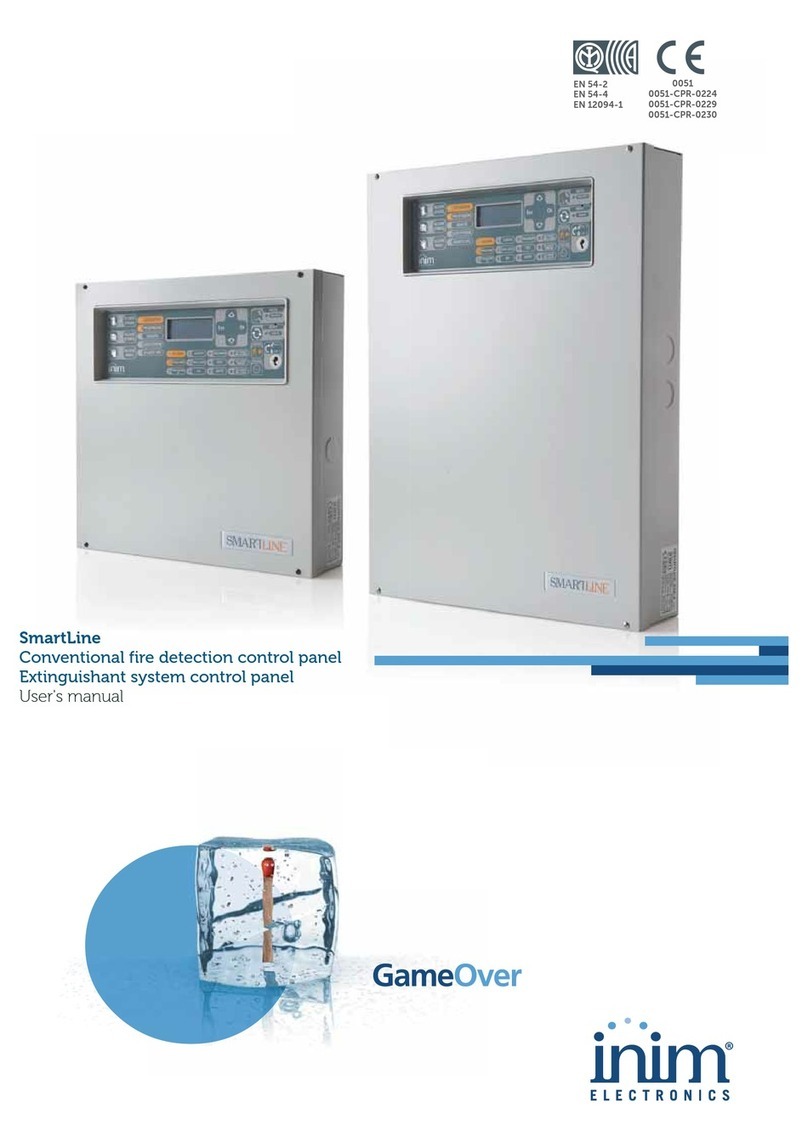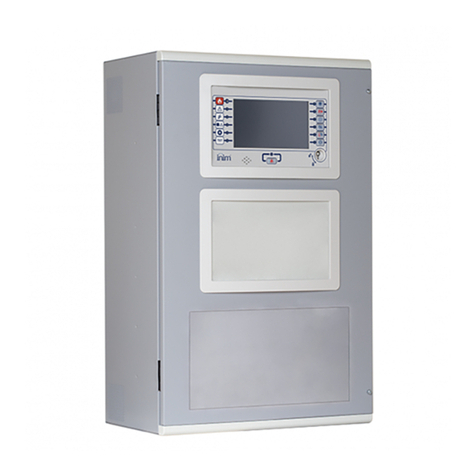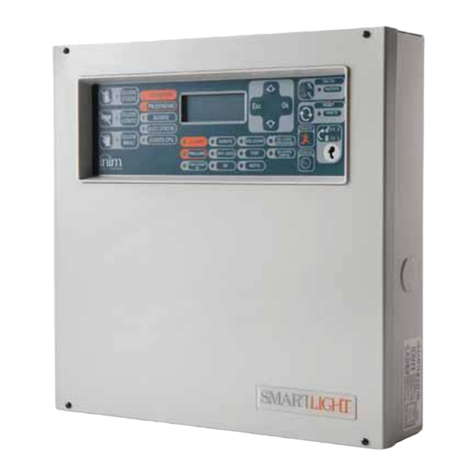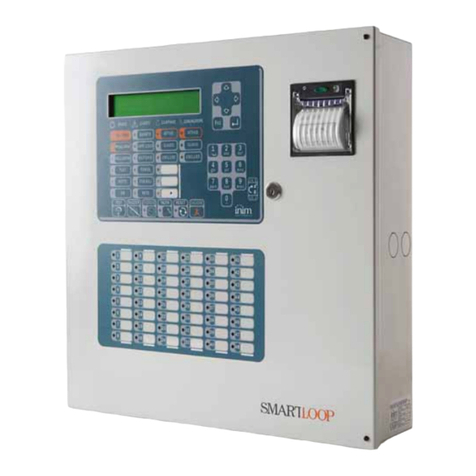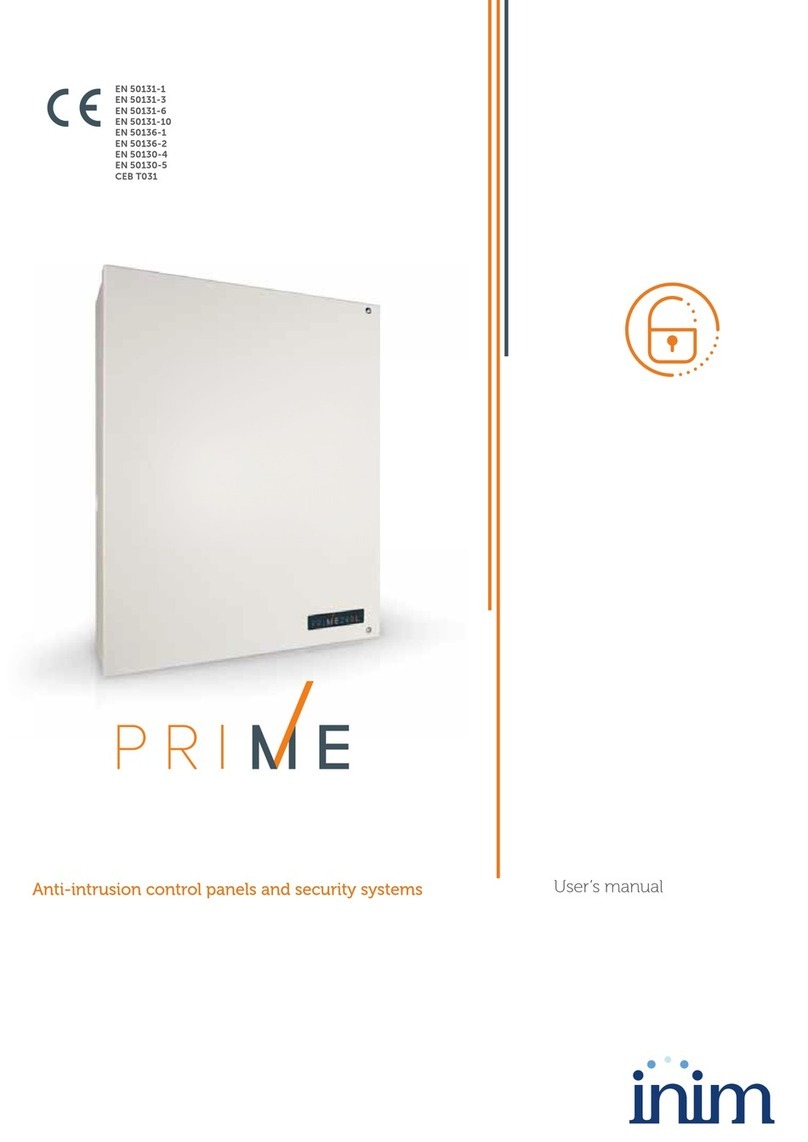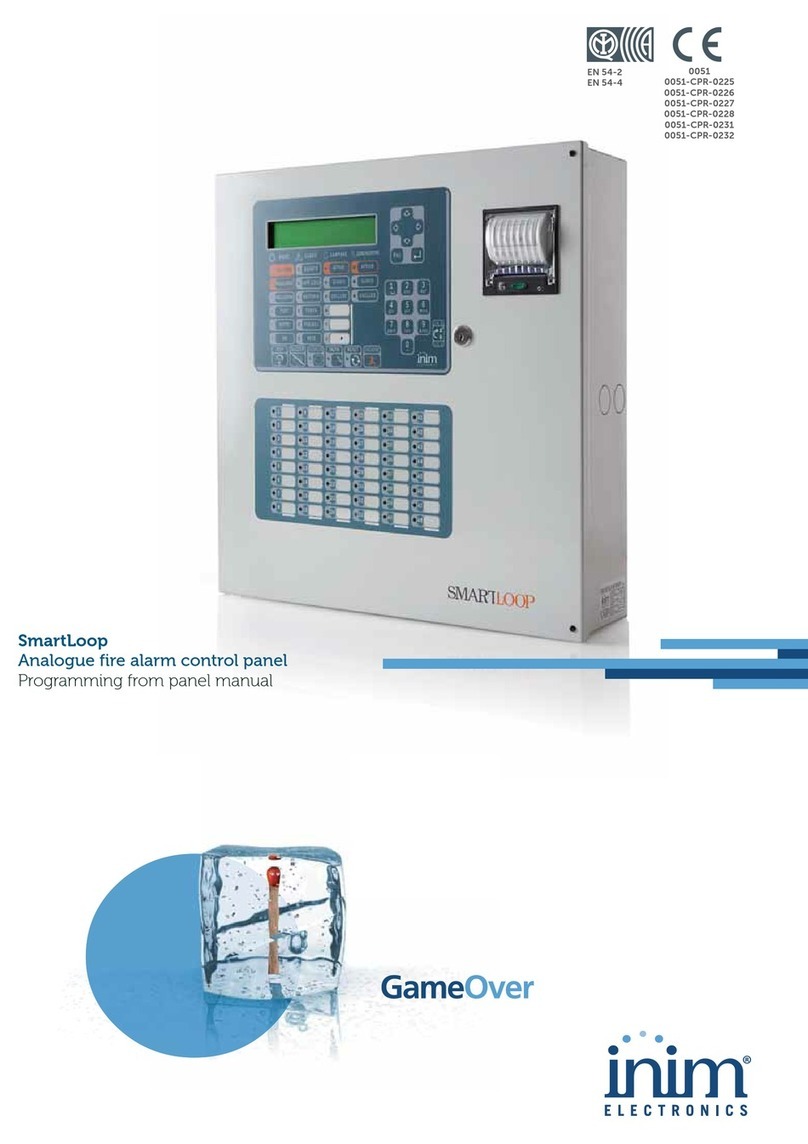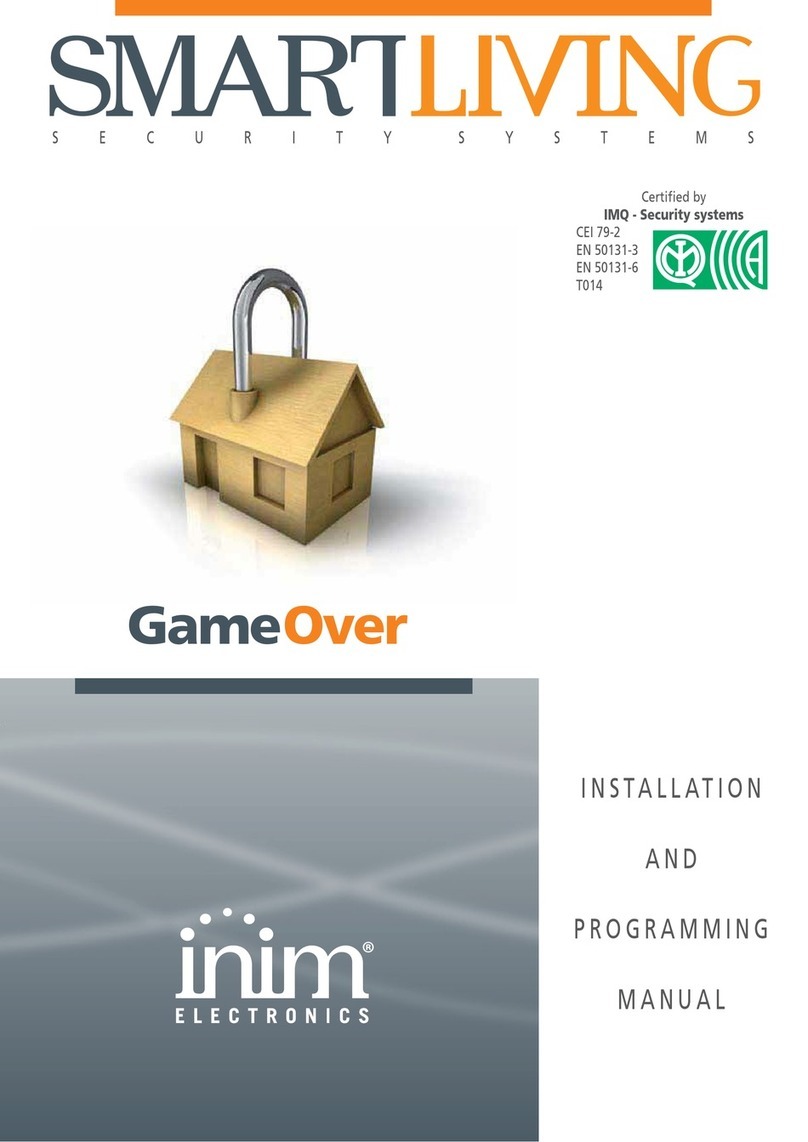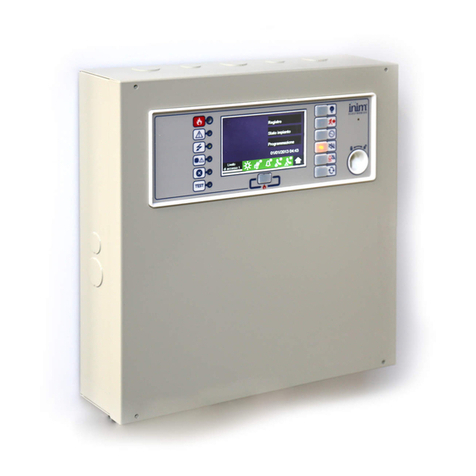
6Introduction
Installation manual
[A] Loop
All the peripheral devices of the system must be connected in parallel to the loop circuit (2 pole STP). The
loop is a closed electrical circuit in which a wide variety of alarm devices can be accommodated. Opening or
closing the circuit at any point will generate a fault signal. The loop circuit communication path starts on
the Loop-Out terminals and ends on the Loop-In terminals. The panel controls and communicates with the
loop devices via digital protocol. The loop utilizes the same two poles for the power supply to the system
devices and the two-way communication channel. The loop accommodates:
1. Detectors: A smoke detector is an active fire protection device that detects smoke or flames and
issues an alarm thereby alerting building occupants to the danger of fire. Detectors can be:
- Optical smoke detectors which look for the presence of visible by-products of combustion in the
detection chamber (Tyndall effect).
- Optical/Heat detectors which operate as per optical smoke detectors but also sense for increase in the
environment temperature. The combination of both sensing methods (smoke and heat) provides faster
detection and reduces the false alarm rate.
- Heat detectors: sense for an increase in the temperature in the protected environment. There are two
types of heat detector: Fixed temperature — that signal alarm when the temperature exceeds the
predefined threshold; and Rate-of-rise which, as well as monitoring the predefined fixed temperature,
also respond to rapid increase in temperature.
- Ionization smoke detectors: feature a harmless radioactive source within a dual detection chamber.
They operate by sensing for a change in electrical conductivity across the detection chamber.
- CO detectors: sense the levels of carbon monoxide given off by all carbon-based materials in the
smoldering stages of a fire (often combined with heat detection sensor).
2. Input Module: a device which monitors the status of another device (callpoint, detector, etc.) and
sends the respective information to the panel. The Input module allows the loop to accommodate any
type of device.
3. Output Module: provides a supervised ancillary output. The cause of activation of this output can be
defined during the system configuration phase. The output module interfaces all types of loop devices
(bells, signaling devices, fire door magnets, etc.).
4. Callpoint: a clearly labeled fire button with instructions for use in the event of fire. Usually placed near
building entrances/exits. These push-button alarm-trigger devices allow building occupants to activate
system alarms.
5. Sounder/Flasher: audible/visual alarm signaling devices.
For the list of the devices the loop accommodates, and for details regarding their wiring and operating
principles, refer to Appendix A - Enea devices, Appendix B - Argus Devices and Appendix C - Apollo
Devices.
The loop circuit configuration (as required by the local Fire code in force) is a fault-tolerant circuit which, in
the event of short-circuit or loop interruption, allows the panel to continue to communicate and drive the
elements on either side of the interruption.
Isolator
In order to provide a fault-tolerant loop circuit that is Fire code compliant, isolator modules must be
installed in series with the loop circuit. Isolators modules detect short-circuit conditions and consequently
interrupt the loop circuit. If a short-circuit occurs, the two isolators adjacent to the shorted section will
open and split the loop in such way as to allow the panel to drive the elements on either side of the
interruption. No more than 32 detectors/devices should be installed between two isolator modules.
Note:
Many detectors/devices have built-in isolators and therefore do not require isolator modules. Refer to
Appendix A, Appendix B and Appendix C for further details.
[B] Repeater SmartLetUSee/LCD (accessory item)
This optional system enhancement tool (equipped with keypad, LEDs, fast buttons and display) replicates
all the system data. The panel supports 14 repeaters connectable via RS485 BUS (maximum cable length
1000m from panel). Repeaters should be located at building entrances/exits in such way as to allow
persons in charge to view the system status without going too far inside the building.
[C] SmartLevel power-supply stations (accessory item)
The SmartLevel is the ideal power source for all devices located in the area protected by the detection
system. Its internal board satisfies all EN54 requirements and provides complete supervision of the power
